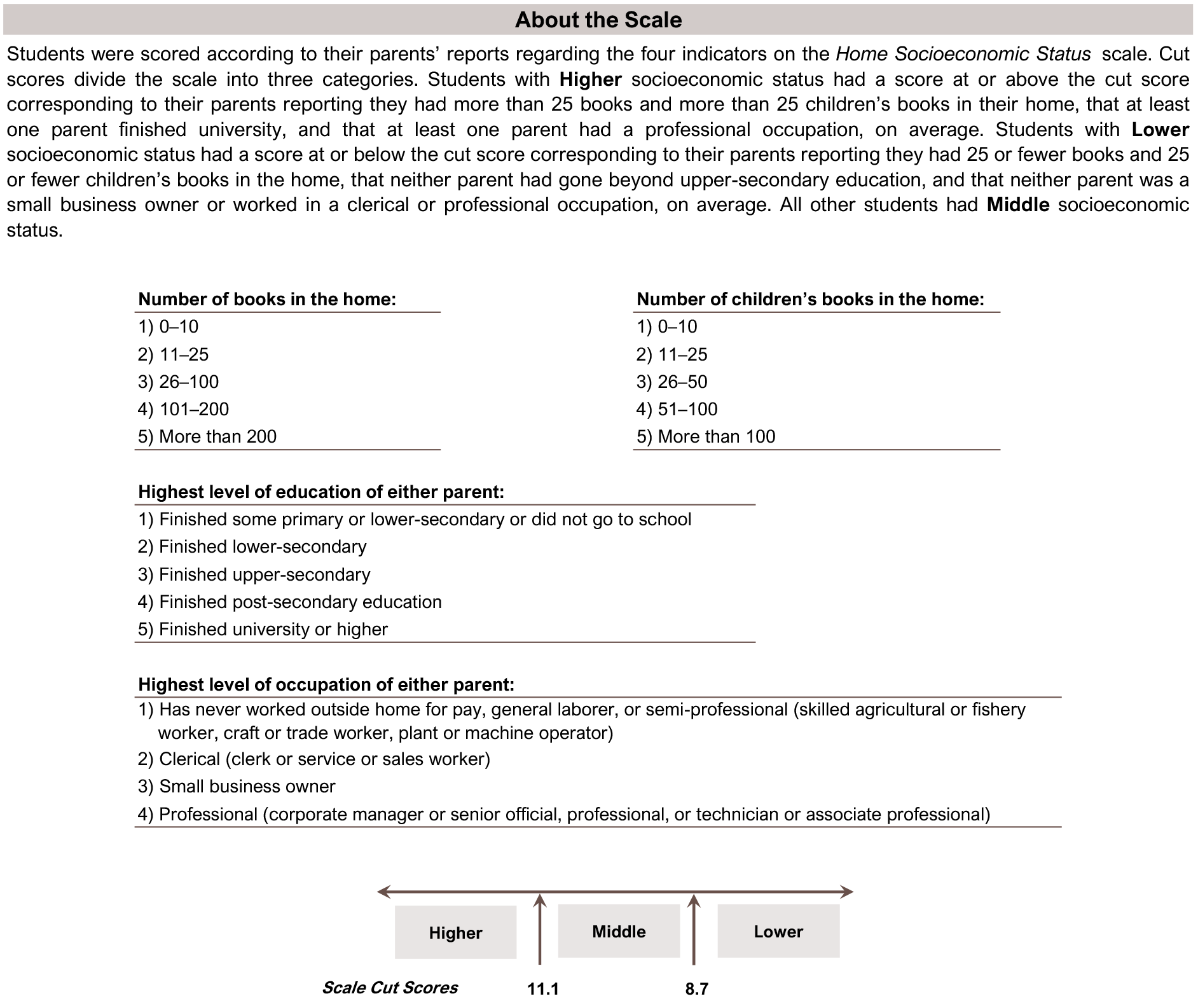Relative Achievement in Mathematics Content Domains
Exhibit 1.1.13 shows countries’ average achievement in each of the three mathematics content domains relative to their overall average achievement (presented from highest to lowest overall average achievement). The exhibit also highlights differences based on a test of statistical significance between the average domain score and the overall mathematics score using an alpha level of 0.01. A smaller alpha level was used to flag statistical significance of subdomain differences to reduce the number of false positives that can be expected due to multiple comparisons across multiple countries and dependent sub-scores. Differences are computed for each student and averaged across the country, rather than comparing different groups of students as in previous exhibits in this section. This within-student dependency leads to considerably smaller standard errors (given in parentheses and reported together with the estimates in the exhibit) and more narrow confidence intervals.
Of the 57 participating countries for which mathematics content domain scores were estimated, 21 had a relative strength in number and 15 had a relative weakness; 16 had a relative strength in measurement and geometry and 17 had a relative weakness, and 17 had a relative strength in data and 25 had a relative weakness.
Read More
Exhibit 1.1.13: Relative Achievement in Mathematics Content Domains
Suggested Citation
von Davier, M., Kennedy, A., Reynolds, K., Fishbein, B., Khorramdel, L., Aldrich, C., Bookbinder, A., Bezirhan, U., & Yin, L. (2024). TIMSS 2023 International Results in Mathematics and Science. Boston College, TIMSS & PIRLS International Study Center. https://doi.org/10.6017/lse.tpisc.timss.rs6460
